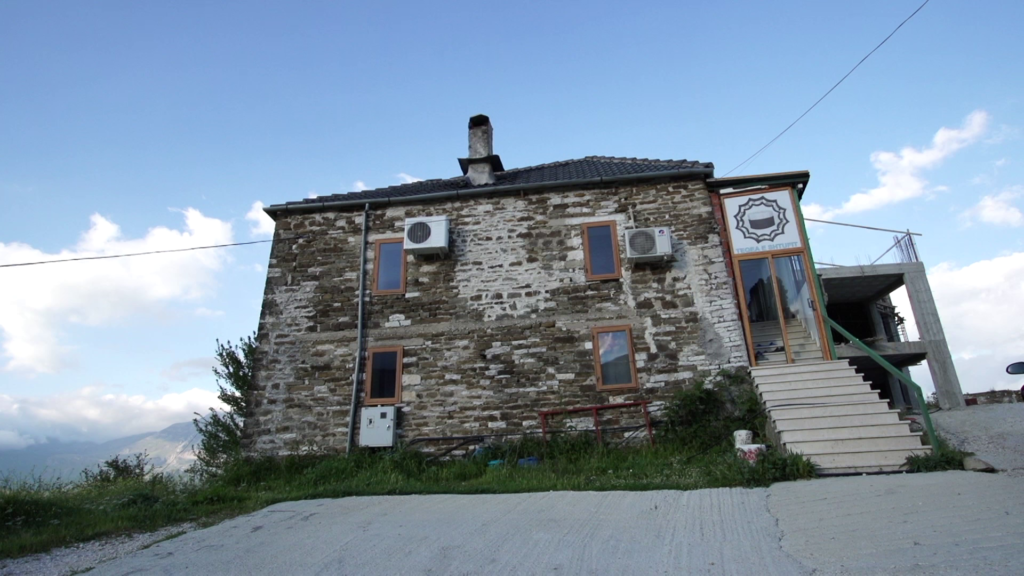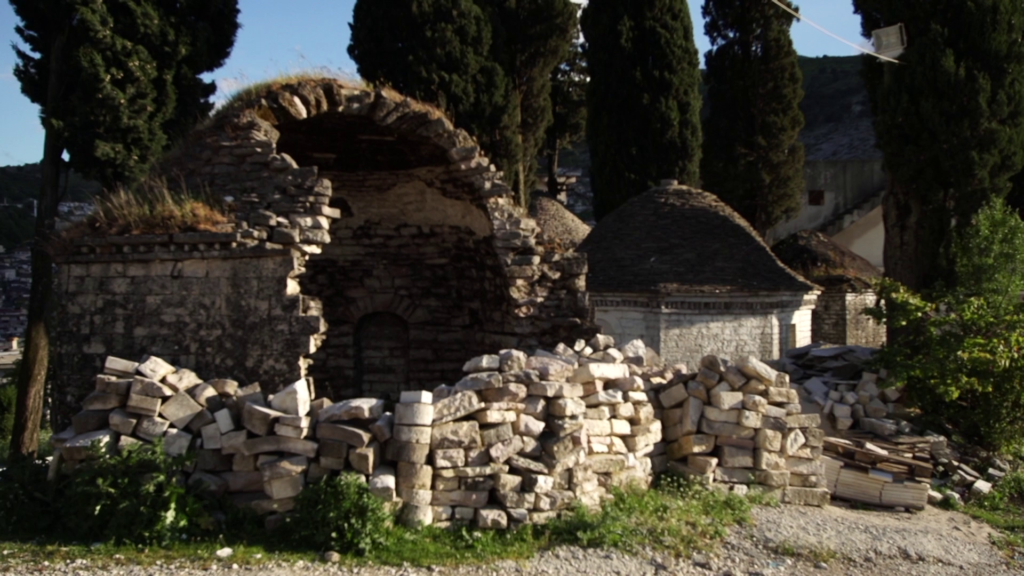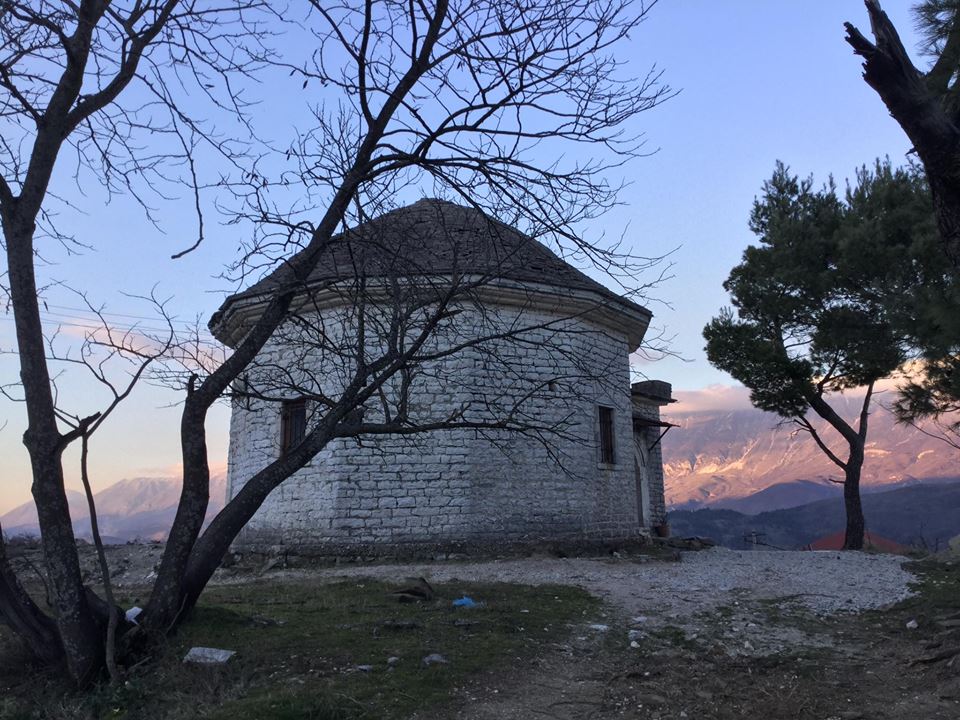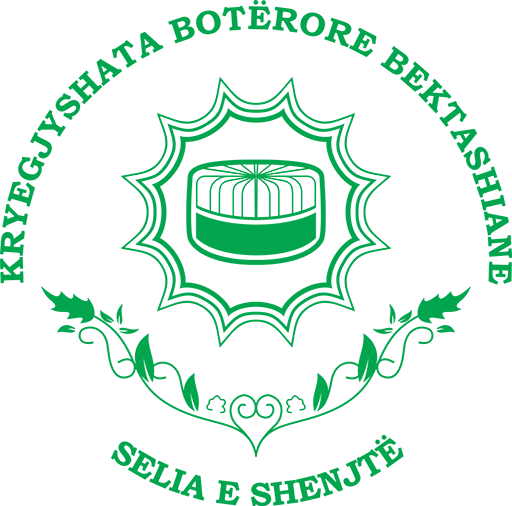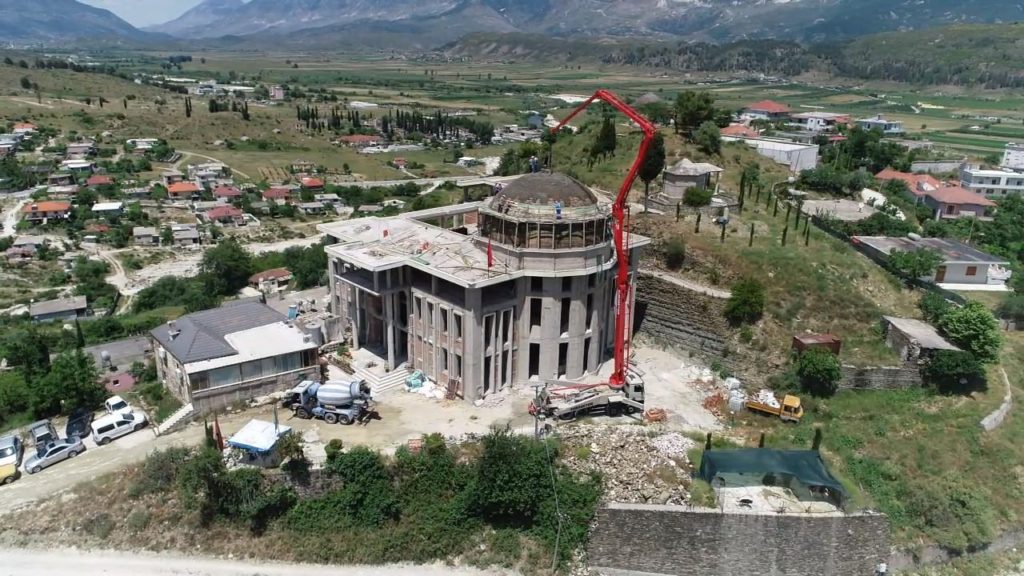
Hajdarie Teqe is located on the hill of Kodra e Shtufit neighborhood, Gjirokastra Administrative Unit, Gjirokastra Municipality. Founded by Mustafa Father in 1824. But the missionaries have come to this place earlier, that is shown on the old tombs at the entrance of the tekke. It was the second important tekke in Gjirokastra. Over time, the tekke of Father Manes (Sulejman), was also named Kodra and Shtuf. The tekke has made an important contribution to the national renaissance, to language learning, to the distribution of Albanian books, and to the detachment of freedom fighters. For patriotic activities the Ottomans interned in Ioannina, the father and 7 dervishes of the tekke. It was burned by the Greek andartes in 1914. Here the second Bektashi Congress took place in July 1924. The tekke is surrounded by high steam and cypress trees. In its territory there are five dome type tombs, made in different periods. There are several large rectangular and square two-storey buildings, with large rooms according to Bektashi tradition. The clergy who served: father Mustafa Babaj (1824-1830), Bejtash Babai (1825-1843), father Selimi the old, (1843-1849), Kalender Ismail Father (1849-1859), Kapllan Father (1859-1869), Hajdër Father (1879-1904). Father Hajdëri collaborated with Koto Hoxhi, an apostle of the Albanian language. In 1904, the dervishes of this tekke were arrested by the Turks for Albanian books: Dervish Sulejman Kardhiqi, Dervish Latif Gjirokastra, Dervish Mehmet Gjirokastra, Dervish Hysni Kardhiqi, Dervish Bajram Kosturi, Dervish Shaqo Plesati, Dervish Kaman Smokthina and others. Father Sulejman Kardhiqi (1904-1934), Kalender Abdalli passed away in 1795, Father Sejfullah Kuka (1913-1916). In 1940 the following clergymen served: Ibrahim Kuka, dervishes Shaqir Muhamed, dervishes Muharem Matush, dervishes Myhtar Maliq, dervishes Esad Rakip, dervishes Shahin Ruhin, service clerks: Mustafa Kacari, Alush Goxho and Qerim Hasan. Then they led the tekke in 1950, Ibrahim Kuka with dervishes, Hysen Lazarati, dervishes Muhamet Golemi. In 1946 the tekke was transformed into a hospital by the communist government. After that, it ceased to function as a tekke until 2002. It reopened in 2003. A new building with an element of Bektashi architecture is being built, by father Skënder Dervishi.

